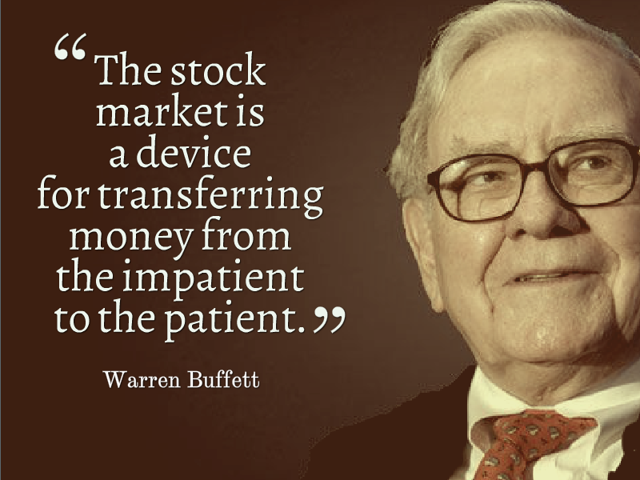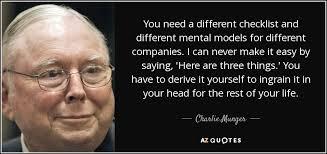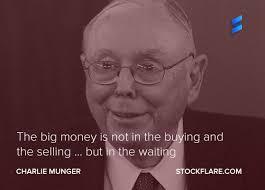I have lost significantly investing in deep value stocks, I need to learn how to be a great deep value investor? Good to learn from article of SA.
How To Be A Deep Value Investor
Summary
We investigate the importance of patience and perspective.
We look at some examples from the past.
We provide a synthesis of many value investing ideas.
Trying to make deep value investing sound exciting can be difficult, because most people imagine value investors like this…

However, deep value investing can be exciting if you enjoy profits.
Warren Buffett and Charlie Munger, depicted below, are currently enjoying their profits and have inspired many people to take up value investing. Are you excited yet?

Charlie Munger described value investing like this:
You’re looking for a mispriced gamble. That’s what investing is. And you have to know enough to know whether the gamble is mispriced. That’s value investing.
Munger’s thoughts are simple yet profound for any value investor, especially a deep value investor. Templeton points out that investing is: “So simple in concept. So difficult in execution.” In this article we will share some of our thoughts on deep value investing.
So what is deep value investing?
According to Mr. Pink (me, myself and I): You’re searching for something people are giving away because ‘everyone’ agrees that it has almost no value. You figure out through second sight (Howard Marks) or reframing that the investment has a range of potential positive values. You use those values to create a plan. Determining the difference between what has value or future value and what is (or will be) worthless is deep value investing.
The difficulty, as Munger would point out, is that finding value is not a hard science where the best formula wins. Sorry, quants and artificial intelligence, but finding value takes perspective and a combination of quantitative and qualitative factors combined with patience. Your calculator will only take you so far.
Sir John Templeton explains how we find these values:
There’s only one reason a share goes to a bargain price: Because other people are selling. There is no other reason. To get a bargain price, you’ve got to look for where the public is most frightened and pessimistic.
The deep value investor embraces these concepts wholeheartedly.
I personally have spent a few years creating a proprietary method of stock selection that focuses on a myriad of factors. I would share it with you, but then I would have to make you sign some non-compete, non-disclosure agreement, or charge you some excessive price, but I won’t do any of that yet.
Instead, let’s talk more about being a deep value investor. Two primary attributes of great deep value investors include patience and perspective. These two qualities appear to be disappearing in the modern era, so those that develop them should have a great advantage.
Patience
- Waiting to buy until the margin of safety is excessive.
- Passing on opportunities that don’t hit your buy price
- Waiting for future catalysts
- Letting your profits run

Perspective
- Finding value in different places
- Defining where you are currently in a market cycle
- Examine the best and worst possible outcomes
- Finding your own unique opportunities
- Realizing that forecasts even your own are probably worthless
- Accepting that macro forecasts are definitely worthless

As Munger points out, these qualities allow an investor to create significant alpha, but are never mastered.
Most investors will need to change how they look at investing, and possibly the world, if they want to become effective deep value investors. It’s not for everyone.
As a deep value investor, you dislike the hot stock of the day, you abhor momentum trading (unless you are selling into it), and you take what the market gives you. You invest in equities priced sometimes like options. You look at restructurings, mergers, fallen angels, scandals, turnarounds, market sell-offs, accidents, lawsuits and out-of-favor sectors.
You look for misunderstood companies with strong balance sheets, valuable assets, competent management (preferably with skin in the game or aligned with stockholder interest), upcoming catalysts, and sufficient fear. You want to take the road less traveled.
This doesn’t mean one has to limit themselves to obscure penny stocks like Clearwire (CLRW) or Ferro (NYSE:FOE), two of my favorite multi-baggers few people knew about. You can still look at well-known companies.
In fact, many of my favorite former multi-bag picks were relatively well-known companies like Bank of America (NYSE:BAC), Ford Motor (NYSE:F), Nokia (NYSE:NOK), American International Group (NYSE:AIG), and Sprint (NYSE:S). All of these seemed untouchable to many investors still reeling from heavy losses after the financial crisis, but were poised for outsized returns.
Sometimes it’s not even a stock that seems cheap, it’s a country – like Russia (RUSL, RSX) last year. A good deep value investor doesn’t discriminate by sector or geographic location as long as they can find value. They hold their nose and they buy.
In the past, I have found many biotech companies trading at low values, like United Therapeutics (NASDAQ:UTHR).
Recently deep value investing had me investigating uranium mines, like Bannerman Resources (OTCPK:BNNLF) and U-R Energy (NYSEMKT:URG). This article about BNNLF shows some of my thought process as a deep value investor. If you haven’t read it, I suggest you take a look. My other recent (and entertaining) article regarding Uranium and URG can be found here. These positions are part of my real portfolio.
Finding these deep value investing opportunities takes a curious mind and awareness of the following:
Margin of safety
Determining the margin of safety can help soften the landings of bad decisions. The problem comes when you panic or buy in too early.
Seth Klarman wrote a whole book about margin of safety, aptly entitled Margin of Safety (value investing sadly gives no points for creativity), and it is considered a classic. Ironically, the book is extremely overvalued, as it had limited printings. The information in the book is priceless, and if you search the internet, you might find it somewhere in an electronic version for cheap or free. Think of deep value investing as margin of safety on steroids. If Klarman buys his positions at greater than a 20% discount to fair value, I want to buy positions at a greater than 50% discount.
Diversification
People tend to disagree on diversification, but I think a little diversification in deep value is an absolute necessity. If you try to concentrate into just one position, you are not employing deep value investing, you are gambling.
It’s not gambling if you speculate on a few issues at once, right?
I do occasionally hold as few as four positions, and rarely hold more than ten, in my deep value portfolio. This works for me, but I don’t think it would work for most casual or regular investors. The majority of experts recommend greater diversity than I use, because this helps protect your downside. So I suggest you do as I say, not as I do.
If you don’t believe me, take Sir Templeton’s advice: “Diversify in stocks and bonds, as in much else, there is safety in numbers.”
Independent Solid Thesis
Once everybody knows about a deal, the deep value opportunity is lost. You have to be willing and able to walk the road alone. Everyone might disagree with you, but if your reasoning is sound, it should work out eventually.
Remember that “if you buy the same securities everyone else is buying, you will have the same results as everyone else.” (Templeton)
Time Arbitrage
Time is the biggest asset a deep value investor has. Many people live in the moment and can only see what is happening right now, without being able to predict what might be. Everything in value investing is a “might-be.”

Know Thyself
Certainty is a certain destroyer of capital. Beware your own certainty, because your own ego sets the best traps. Analyze your decisions and write down why you made them so you can find your mistakes. A deep value investor needs perspective, but should also be reflective enough to know they might be wrong, because…
Bad Things Happen
When bad things happen, your portfolio can evaporate quickly. If you have ever been “ARPed,” you will know what I’m talking about.
“ARPed”? When an investor owns an asset that is rapidly losing value, its debt becomes greater than its assets, and it violates its debt covenants. This is when a deep value investment turns into a value trap.
Macro conditions in the commodity markets caused my Atlas Resource Partners shares to rapidly lose value. Luckily, do to my inherent understanding of sunk costs, I was able to let go way before the bankruptcy wiped out other shareholders. I learned a valuable lesson after some nasty revenge trading, which, although financially beneficial, was spiritually draining.
You have to remember that failure happens, and unforeseen events can ruin your best plans. So plan to fail — or at least plan how you will deal with it if it happens.
Failure is the main justification for some diversification, even when you are sure — and I would say especially if you are sure. You need to size your positions according to risks.
Your failure rate never matters until the day it matters. Even a one percent failure rate can ruin you if the costs of losing are too high. Just ask anyone who has played tournament poker: If you lose once when you’re all-in, it’s all over. People fail to see the danger of being overly concentrated in one or two positions — at their own peril.
I often wonder at people’s ability to overestimate the upside and diminish the probable downside. Only a fool does this. But I blame the behavior, not the person.
Often in life, I also am an optimistic fool, because it provides me with a modicum of hope and joy. I am pretty sure if I were a realist, I never would have asked out my wife, or started my own company.
In the markets, I try to avoid such sentimentality, but I would be remiss if I didn’t admit that every long idea is, in fact, optimism in action. I would urge my readers to only employ cautious optimism while investing. Expectations can be a real downer if they go against you and cause panicked reactions.
It is a good idea to have a worst-case scenario that is really a worst-case scenario. Any company can fold if enough horrible things happen. As an investor, I like to think about how my company could fail. I believe Charlie Munger calls that “inverting.” If you take these thoughts into consideration, you should be ready to take your first dive into deep value equities.
I will leave you with one warning regarding deep value investing. Random speculators, contrarians for contrarian’s sake alone, and other fools might buy anything they think has hit bottom or looks cheap. But this alone will not make you a value investor or a deep value investor. This type of random speculation typically ends poorly, because today’s bottom can become tomorrow’s high, and poor risk management will lead to poor results. Sometimes a speculator looks like a deep value investor, so be careful whom you trust, and do your own research. Remember that a deep value investor always has a perceived value from which they base decisions, not just expected price movements.
I believe anyone with sound judgment can make deep value investing part of his or her financial plan, so I hope you can use these ideas as a starting point to investigate deep value investing further. I look forward to sharing more ideas on deep value investing.
Thanks for reading, and good luck investing.
Disclosure: I am/we are long UTHR, BAC, BNNLF, URG, F.
I wrote this article myself, and it expresses my own opinions. I am not receiving compensation for it (other than from Seeking Alpha). I have no business relationship with any company whose stock is mentioned in this article.
Searching for Deep Value Stocks
This is a great multiple for stock selection. Like the price-to-earnings ratio, it helps you find unloved companies, but it also penalizes stocks for having too much debt (more debt = worse ratio, ceteris paribus). If all you did was buy the 10% of stocks with the cheapest EBITDA/EV ratios on an annual basis, you’d have outperformed the market by more than 5% annually over the past five decades.

I asked Tobias what he considers a very cheap multiple EV/EBITDA multiple, and we agreed that somewhere below 5x indicates a cheap stock, while a multiple of less than 3x indicates very deep value. So here is the problem: today, we face what is perhaps the most difficult environment for deep value investing in history. Just 3.2% of non-financial, U.S. companies with a market cap of at least $200MM trade at an EV/EBITDA multiple below 5x. That is just off June’s all-time low of 2.9%.

There are just 65 stocks today with deep value multiples. Most are small. While a few big energy stocks make the cut (COP, HES, MRO), the median market cap of these 65 stocks is just $1B. If we limit ourselves to EV/EBITDA multiples below 3x, then I see just 7 stocks available. The largest has a market cap less than $2B.
So what is a deep value investor to do? Two options are to go smaller (into the micro-cap market) and go international. I’ll explore these options in a future post. Going smaller isn’t feasible for big institutional asset managers, but is possible for the little guy. Going international is great, but hard to execute as a small individual investor.
As I’ve written before, this bull market has left us with a very homogenous market where valuations are clustered around the mean. The sad fact is that in 2014, it’s hard out there for a deep value investor.
For much more on the topic, go read Tobias’s book. You’ll notice that the book is expensive, but trust me—it is worth every penny.
